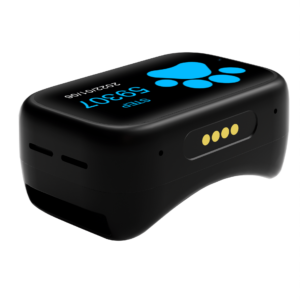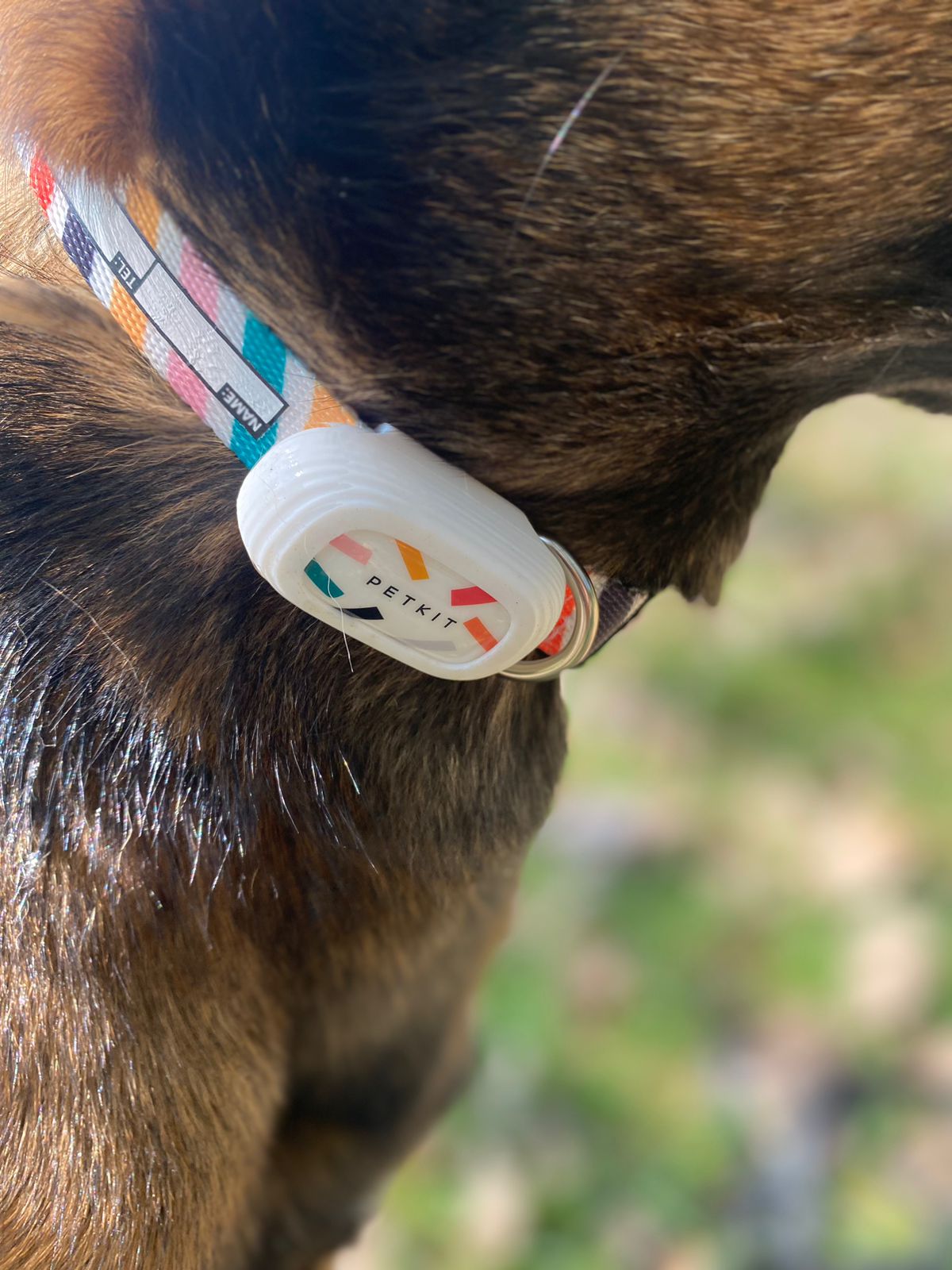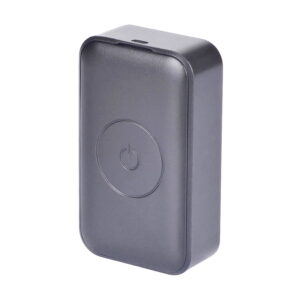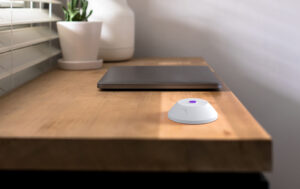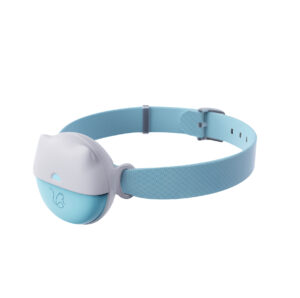How the TailMe Pro Range Trackers Save Battery While Keeping Your Pet Safe
If you are comparing GPS dog and cat trackers and battery life is your top concern, here is how TailMe Pro range uses NB‑IoT, Bluetooth beacons, Wi‑Fi and GPS to maximise days between charges. The goal is simple: reliable location when you need it, without constant charging. This guide explains how GPS pet trackers save battery in real life, the settings that matter, and when to switch on live tracking.
What drains a pet tracker’s battery?
Every component uses power. We manage each one intelligently so your TailMe Pro delivers accuracy without waste:
- Cellular radio: 4G and even low-band LTE are power-hungry if left always-on.
- GPS: the biggest drainer if allowed to search continuously.
- Wi‑Fi scanning: moderate power, useful for indoor positioning.
- Bluetooth Low Energy (BLE): tiny range, tiny power cost.
- Sensors and extras: LEDs, motion detection, and processing.
TailMe Pro runs in two smart states:
- Home Mode: when your pet is at home or a known safe place.
- Away Mode: when your pet leaves that familiar area.
NB‑IoT vs 4G: smarter cellular for pet trackers
Traditional 4G is built for speed; your pet tracker needs efficiency. That is why the Pro range prioritises NB‑IoT (Narrowband IoT):
- Lower power consumption than 4G for the same data.
- Excellent penetration and range for suburban and indoor edge cases.
- Small, occasional data bursts rather than an always-on link.
In Home Mode the tracker stays offline most of the time and checks in on a schedule, saving significant battery. In Away Mode it connects more frequently, and only when needed.
Coverage note: NB‑IoT availability varies by country and network. TailMe supports NB‑IoT in supported regions with roaming in select areas. Check coverage before purchase if you live rurally or travel.
GPS power use: timeouts and faster fixes
GPS can find your pet with pin-point accuracy outdoors, but it is expensive power-wise if it keeps searching.
- Outdoors: in good conditions TailMe Pro aims for a fast fix, often in a few seconds, then powers GPS down. Fast fixes cut energy use dramatically compared to long satellite searches.
- Indoors: GPS signals are weak. The tracker tries briefly, then stops and falls back to Wi‑Fi or cell-based positioning to avoid draining the battery.
Result: useful location without unnecessary GPS burn.
Bluetooth beacons and Home Mode
Bluetooth beacons are the unsung heroes of battery life. They create a Home Zone with almost no energy cost.
- Pair a BLE Beacon to your router room, entrance or your pet’s sleeping area.
- When TailMe Pro sees that beacon, it knows your pet is nearby and shifts into a low-power rhythm.
- Your app still shows last known indoor location with Wi‑Fi context, plus the peace-of-mind that your pet is home.
Set-up is quick in the app. A beacon is strongly recommended for best battery life, especially for indoor cats.
Tip: Add your home Wi‑Fi network in the app as a trusted network. When the tracker sees it, it behaves like Home Mode even without a beacon.
Away Mode and Live Tracking: when to use it
Sometimes you need real-time updates to bring a pet home fast.
- Nearby search: if you are within Bluetooth range, use the app’s Bluetooth Finder for precise, room-by-room locating without heavy battery cost.
- Farther away: enable Live Tracking Mode for rapid GPS and NB‑IoT updates while you recover your pet. Live mode increases power draw by design; use it when needed, then return to your normal schedule.
Pro tip: Queue Live Tracking from the app. The tracker will pick the command up on its next scheduled check-in or immediately if already outdoors.
Battery life by scenario (typical ranges)
Real-world battery life depends on activity, signal quality, temperature and update frequency. These are typical ranges from our field testing to help you plan. Your results may vary.
- Infinity Pro GPS Pet Tracker (best for most dogs)
- Home Mode with BLE/Wi‑Fi: about 7–14 days
- Outdoor tracking (5–10 min updates): about 3–6 days
- Live Tracking (rapid updates): roughly 8–16 hours
- Agile Pro GPS Cat Tracker (lightweight cat GPS collar)
- Home Mode with BLE/Wi‑Fi: about 3–5 days
- Outdoor tracking (5–10 min updates): about 1–3 days
- Live Tracking (rapid updates): roughly 6–12 hours
- Nimble GPS Pet Tracker (compact, light-duty)
- Home Mode: about 3–5 days
- Live Tracking: roughly 3–6 hours
If you need the longest possible time between charges, pair a BLE Beacon, add your trusted Wi‑Fi list and choose a sensible update interval (more on that below).
Battery-saving tips for dogs and cats
- Set a smart update interval: 5–10 minutes suits most pets day to day; faster intervals cost more power.
- Use Home Mode: pair a Bluetooth beacon and add trusted Wi‑Fi networks to create a low-power home zone.
- Schedule Sleep Windows: if your pet has predictable night-time routines, allow the tracker to check in less frequently overnight.
- Use Live Tracking only when needed: turn it on to find an escape artist; turn it off once reunited.
- Keep firmware up to date: updates often include power optimisations.
- Fit matters: a collar that keeps the tracker facing skyward outdoors improves GPS speed and reduces retries.
- Mind the elements: extreme cold or heat affects batteries; charge indoors and avoid leaving trackers in hot cars.
- Healthy charging: avoid fully draining the battery repeatedly; top up when you can.
TailMe Pro vs other TailMe trackers
Choosing the right device helps you get both safety and battery life.
- Infinity Pro (NB‑IoT)
- Best for: active dogs, suburban and rural walks, escape artists
- Strengths: balanced weight, strong battery life, great with BLE beacons
- Agile Pro (NB‑IoT)
- Best for: lightweight cat GPS tracking, small dogs
- Strengths: compact design for collars, excellent with Home Mode
- Infinity 4G / Agile 4G
- Best for: areas where NB‑IoT coverage is limited
- Strengths: broader cellular compatibility
- Trade-off: shorter battery life than NB‑IoT models
Want help choosing? Compare TailMe Pro models or speak to our team for a tailored recommendation.
How GPS pet trackers save battery: the TailMe Pro handoff
To stretch battery while keeping accuracy:
- Start with BLE: nearest and lowest power (ideal for home and room-level finding).
- Add Wi‑Fi: quick indoor context without GPS searching.
- Use GPS outdoors: get a fast fix, then power down.
- Send data over NB‑IoT: short, efficient bursts on a sensible schedule.
This layered approach gives you reliable location with less energy.
FAQs: battery life, indoor tracking and coverage
- How long does TailMe Pro battery last?
Typical ranges are above. With Home Mode and a BLE beacon, many households see a week or longer per charge on Pro models (Infinity). The Agile is typically about half! - What settings give the longest battery life?
Use Home Mode with a BLE beacon, add trusted Wi‑Fi, choose a 5–10 minute update interval and reserve Live Tracking for emergencies. - Does GPS work indoors?
Not reliably. Buildings block satellite signals. TailMe Pro tries briefly, then switches to Wi‑Fi or network positioning to avoid wasting power. For indoor finding, use Bluetooth Finder. - Does Live Tracking drain the battery?
Yes. Rapid GPS fixes and frequent cellular updates are energy intensive. Expect hours, not days, in continuous Live Tracking. Turn it off once your pet is safe. - What is NB‑IoT and why use it?
NB‑IoT is a low-power cellular standard designed for connected devices. It offers strong range and lower power than 4G, ideal for pet trackers. - How do I set up a Bluetooth beacon?
Plug in the beacon near your pet’s usual home area, open the TailMe app, add the beacon and name your Home Zone. The app will confirm when the tracker detects it. - 4G vs NB‑IoT: which is better for battery?
NB‑IoT typically wins on battery life. Choose a 4G model only if NB‑IoT coverage is limited in your area. - Indoor malls or apartments: what happens?
Expect Wi‑Fi assisted location plus Bluetooth Finder when you are close. GPS may not lock indoors; that is normal.
Helpful next steps
- See Infinity Pro battery specs and best-use tips
- Set up a BLE Home Zone for longer battery life
- Read why GPS does not always work indoors and how to fix it
- Lost pet recovery playbook: settings to check now, before an emergency
- Compare TailMe Pro models and shop now
We are here to help. If you want personalised guidance for your dog or cat, reach out to our team and we will recommend the best settings for your routine and region.

